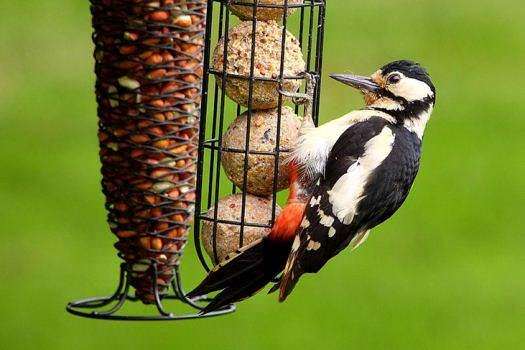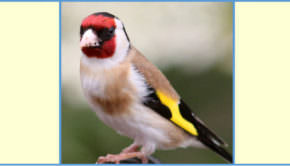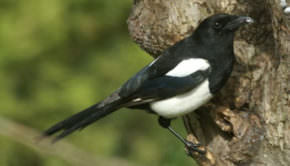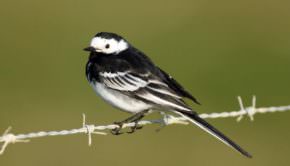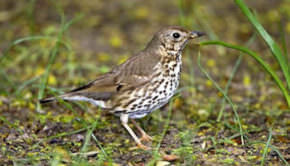Bird of the Month: The Great Spotted Woodpecker
Bird of the Month – The Great Spotted Woodpecker
The Great Spotted Woodpecker is the most widespread woodpecker in Britain. It is black with a large white shoulder patch, scarlet underneath the tail and is about the size of a blackbird. The sexes are similar except the male has a red patch on the nape and the female does not. In spring both birds excavate a nest hole in soft or decaying wood. The female lays 3 – 7 white eggs during the second half of May which both birds incubate. Both birds also feed the young and after 20 – 24 days they are ready to leave the nest although the parents will carry on feeding them for another 10 days. The great spotted has a varied diet which changes with the seasons. During spring and summer it feeds largely on insects such as ants, caterpillars and the larvae of wood-boring beetles but will also take other bird’s eggs and young. In autumn and winter the birds switch to a variety of fruits, seeds and nuts and can be found more and more in gardens feeding on peanut and suet feeders. When probing a tree for food or drilling holes they grip the bark with their strong claws and use their stiff tail feathers as a prop. Migrant great spotted from northern Europe occasionally reach Britain in the autumn. They are bigger than our birds and have conspicuously white underparts. The great spotted woodpecker is not endangered continuing to expand its range partly aided by Dutch elm disease providing them with extra dead wood for nest sites. It is also adaptable, breeding from sea level to 9,000 feet.
Did You Know?
- The tongue is so long that it coils around the back of the woodpecker’s skull and is used like a harpoon to extract insect larvae from within trees.
- They have shock absorbent material at the base of their skull to prevent brain damage when they bang their beak
- They hit the tree at the human equivalent of 20 mph.
- Both sexes use drumming in territorial displays. Each drum consists of between 10 – 40 blows per second.
- Woodpeckers have bristle-like feathers over their nostrils help keep wood particles from being inhaled.
- Woodpeckers are solitary outside of the breeding season – they may choose to mate together the next year but equally may not.

